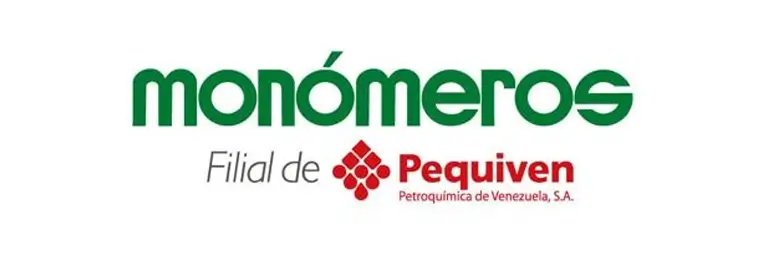How Cowlitz County Automated the Property Value Appeal Process
8 min read
Solution Provided By: Chelsey Hulsey Pedersen, Laserfiche Specialist, Cowlitz County
Cowlitz County, WA has a population of over 102,000 residents and approximately 60,000 parcels of land – both residential and commercial. Each property is either physically inspected or statistically reviewed by an appraiser every year to determine its property value for taxation purposes. Once the value is finalized, the Assessor’s Office sends the taxpayer a Notice of Value which initiates a 30-day appeal period.
If the property owner disagrees with the assessed value, he or she can submit an appeal during this time. Some of these appeals are resolved without a hearing, though sometimes the appellant must plead their case to the county board of equalization. Whatever the outcome, the process has many intermediary steps, which used to be manual and paper driven. All petitions and their associated attachments were submitted on paper. The assessor’s office would make a copy for their paper files. Even though the documents were stored in petition folders in Laserfiche, the assessor’s office still preferred to keep paper versions.
The county transformed this process using Laserfiche Forms and Workflow.
The New Process is Managed Using Laserfiche Forms
The appellant submits the property value petition through an electronic form. This petition form is divided into six sections. Each section asks for a different piece of information.
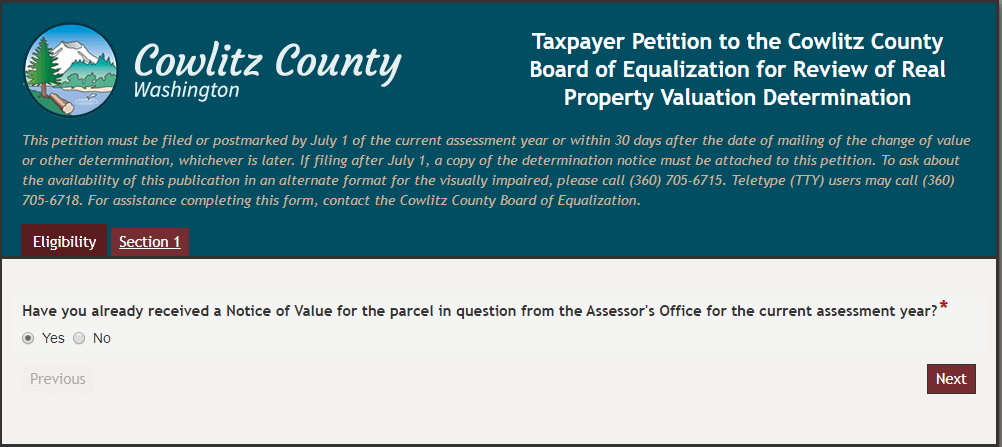
The appellant can only submit one petition per parcel, per assessment year. There is a lookup configured in the form that checks the parcel number against the database to make sure that it is valid and that there are no other petitions on file for it for the current year.
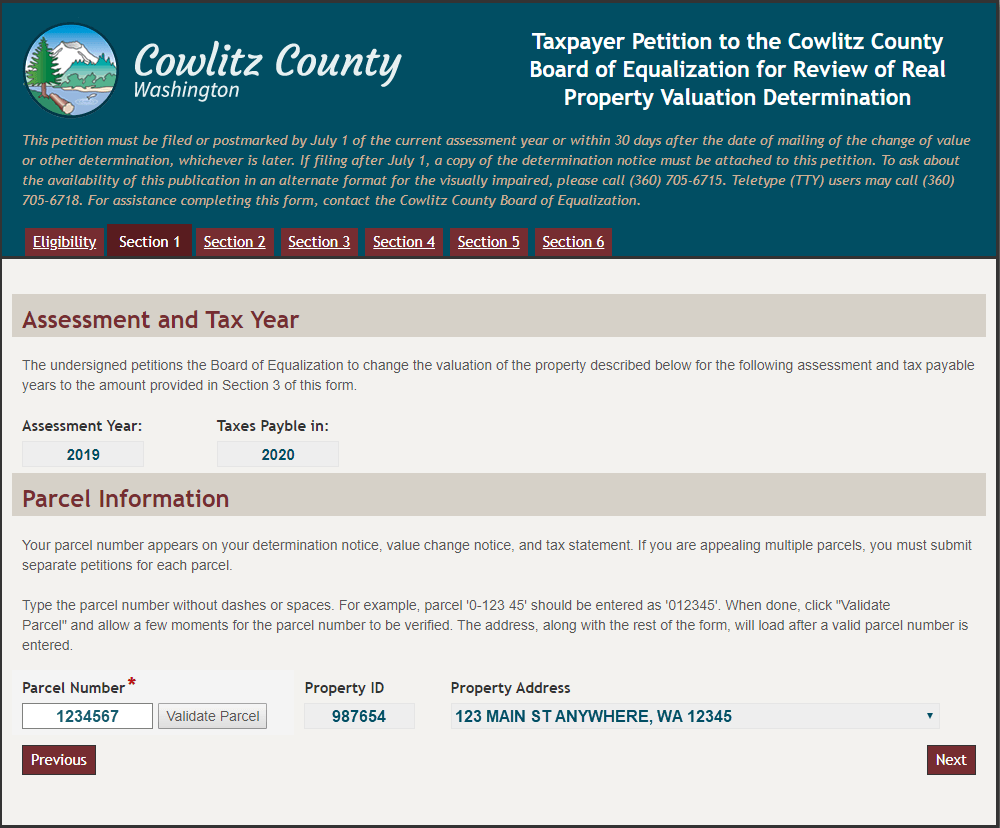
The appellant must specify whether to receive all communication regarding this petition electronically or physically. Appellants who elect to receive electronic communications will receive all notices through automatically generated emails. Applicants who elect to receive physical communications will receive a letter that is printed and mailed by either the clerk of the board or the chief appraiser. Over half of applicants opt for electronic communications.

The assessor’s property value is populated from the database based on the parcel number. The appellant must include the property value that he or she thinks is correct.
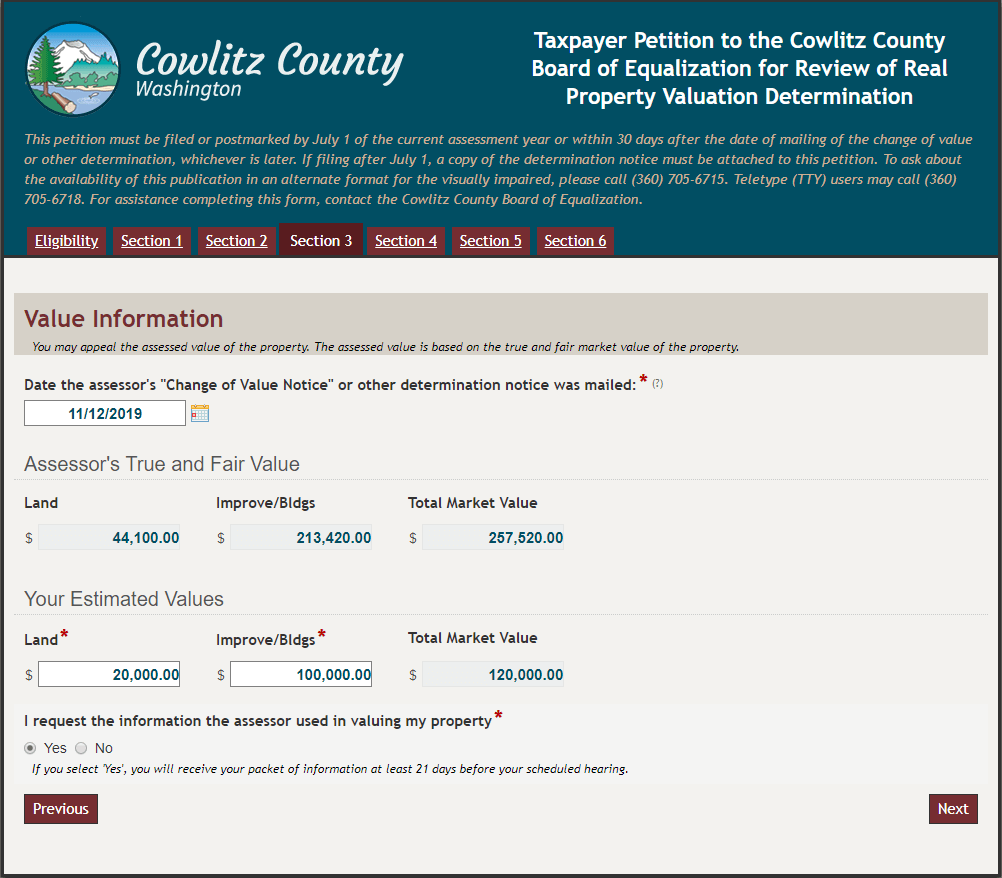
The appellant must also specify a valid reason for the appeal. Some valid reasons include problems/damages with the property that weren’t apparent during the assessment, external economic forces such as a change to the neighborhood containing the property, etc.
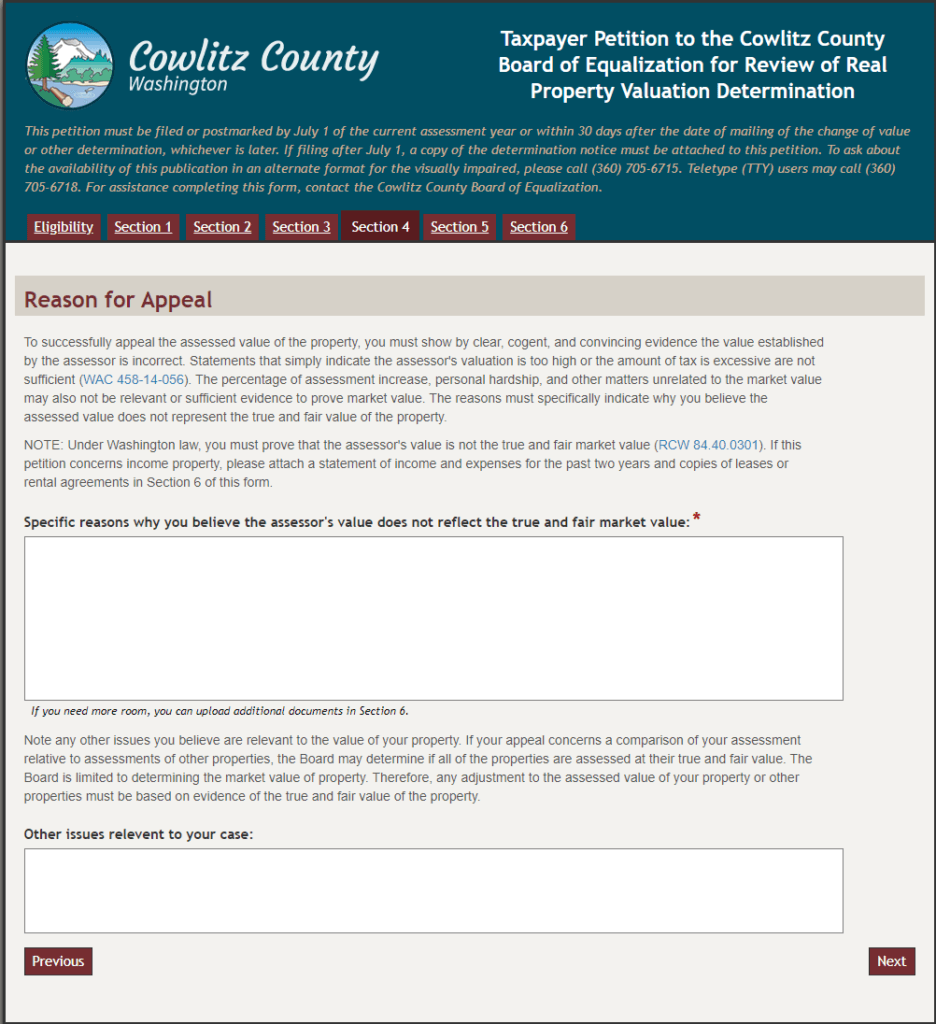
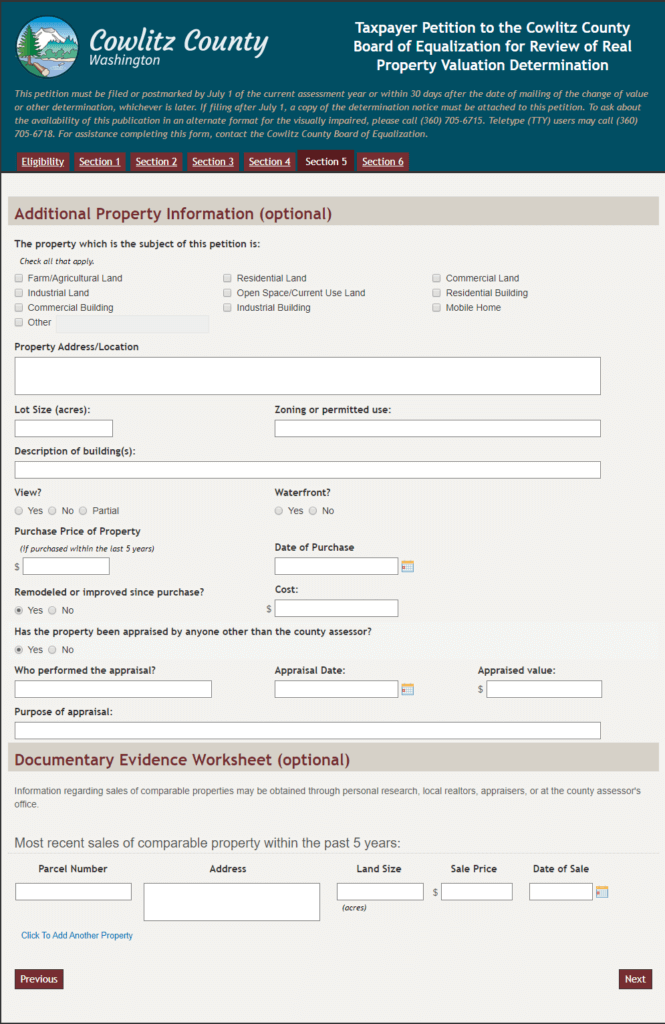
Before submitting the petition, the appellant must upload a copy of the notice of valuation, which was already provided by the assessor. The petitioner may also use a custom link to access a copy of the notice if needed.
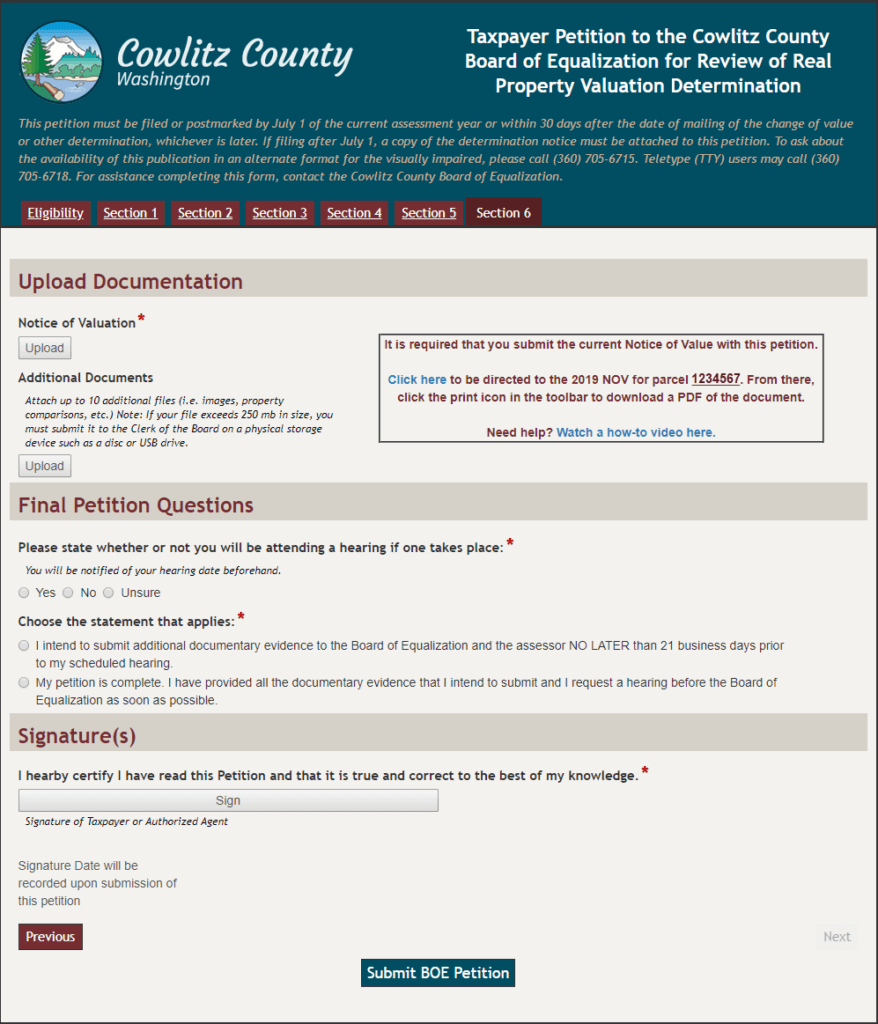
Sometimes, an appellant prefers to submit a petition in person. The clerk then fills out the Laserfiche form on behalf of the applicant and scans in any supplemental documents.
After submission, this petition is routed to the clerk of the board for review. The clerk reviews the petition to make sure that there is enough evidence provided for the petition to be considered compliant. At this step, the clerk can contact the appellant to clarify or update any information. If the petition is compliant, the clerk assigns a unique petition number.
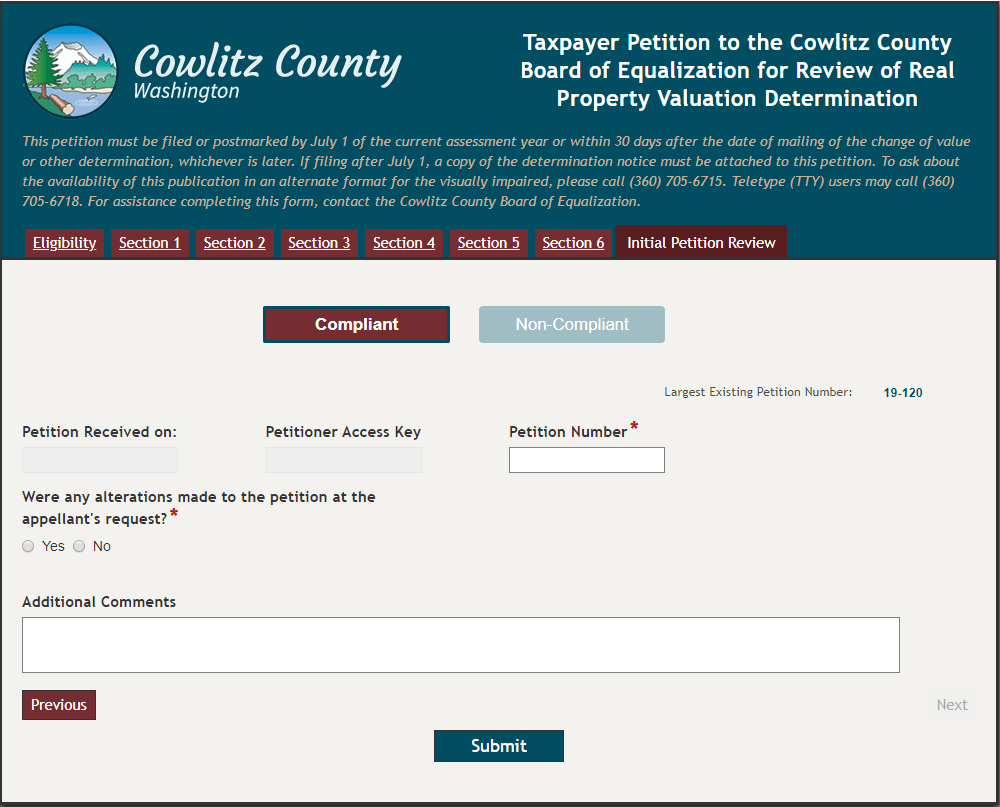
If the appellant elected to receive information electronically, he or she receives a confirmation email once the clerk has completed her task. If the appellant elected to receive information via physical mail, Workflow generates a letter that the clerk prints and mails.
The email and letter contain the petition number as well as the access key that the appellant can use to look up documentation related to the petition in the future.

The petition is then routed to the chief appraiser inside the assessor’s office, who reviews the petition and selects the appraiser most qualified to handle this case.

The petition is routed to the assigned appraiser and the appellant is either sent an email or letter letting them know the appraiser’s contact information.
The appraiser has two options:
- Compromise on a new property value (if there is sufficient evidence to support a change).
- Take the appeal to a hearing before the board of equalization to argue for maintaining the original value.
If the appraiser selects the first option, then he or she is prompted to fill out the value change fields within their user task which will be used to generate a document called a stipulation. If the appraiser selects the second option, he or she drafts a response document and uploads it within their user task. These documents must be reviewed and approved by the chief appraiser before being sent to the appellant.
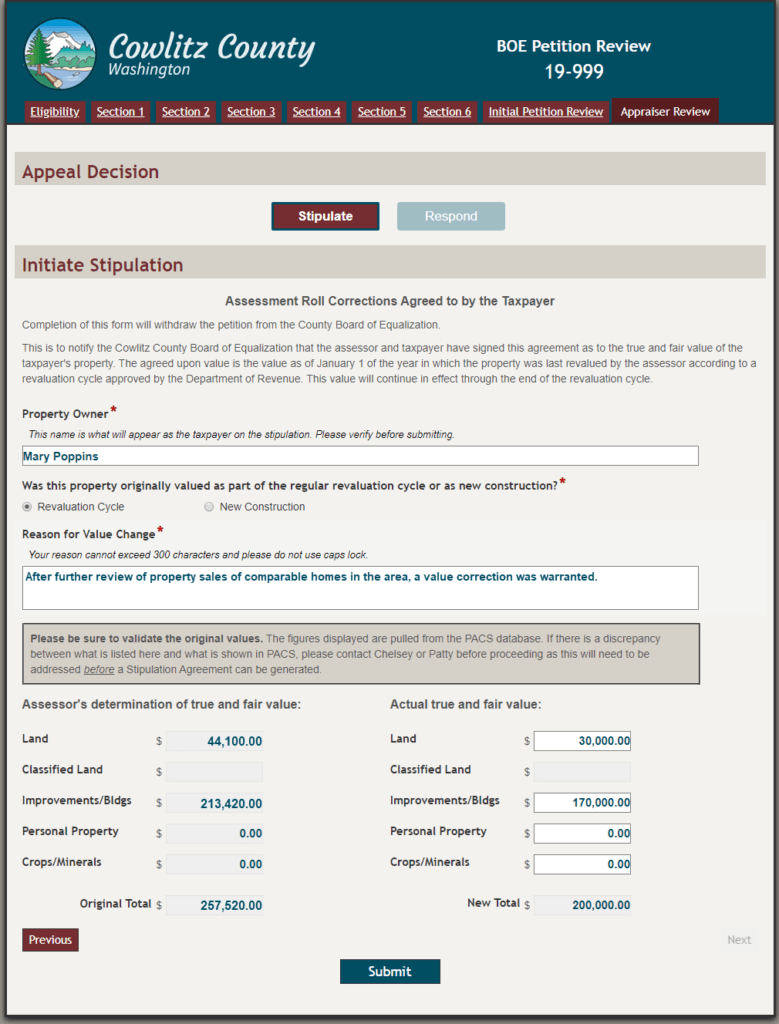
Stipulations are signed by the chief appraiser and appellant, either electronically or by hand depending on the communications method selected by the appellant earlier in the process.
Below is the full Laserfiche Forms process diagram for the property value appeal process.
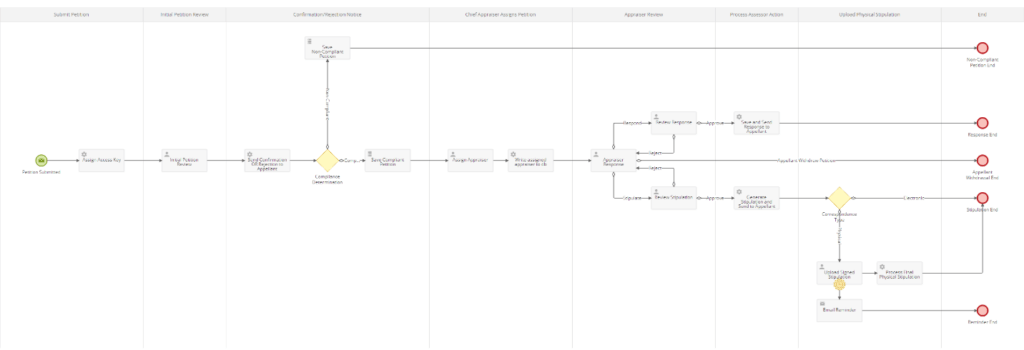
Appellants Can Access Documentation through a Custom Dashboard
The county developed an innovative way of sharing documents with appellants throughout the process. Every time a document is generated it is saved in the repository. Laserfiche Workflow creates the entry, generates a Laserfiche WebLink URL and stores this URL in a database table along with all the other information about the petition.
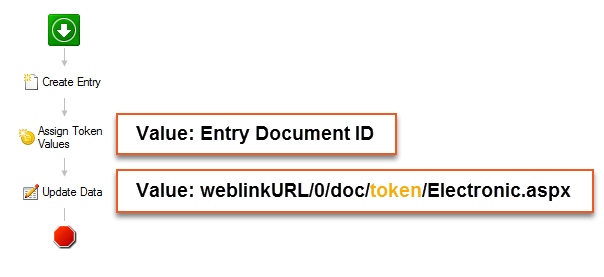
If the appellant wants to access documents related to a particular petition, he or she opens the petition dashboard. This dashboard is a Laserfiche form with the submit button hidden unless the appellant is performing an action, such as uploading evidence, submitting a withdrawal, etc.
The appellant enters the petition number and access key provided in the initial confirmation letter. Forms performs a lookup into the database and fills specific hidden fields with the document’s URL. The documents are opened in WebLink through an iFrame embedded in the form.

“By storing the URL in the database with the other petition information, we can provide access to one or multiple documents which will always be up to date. If there are revisions to a document, we override the URL in the database,” says Laserfiche specialist, Chelsey Hulsey Pedersen.
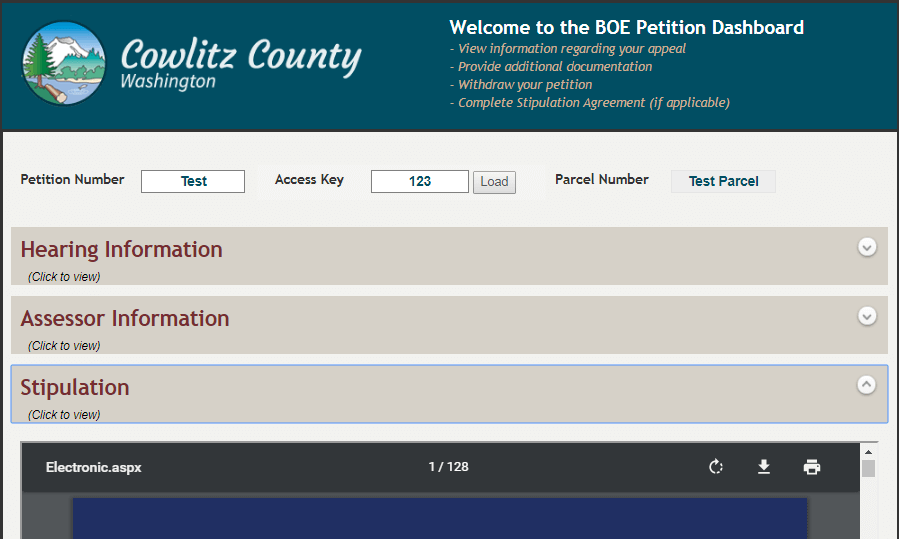
The Clerk of the Board Schedules Hearings
If the petition is not stipulated or withdrawn, the clerk of the board will schedule a hearing. The clerk opens up a hearing dashboard, which is basically an electronic form that contains a table filled with information from a look up into the database containing all of the petitions. The clerk can quickly see which petitions are active, stipulated or withdrawn, and can then schedule the hearings directly though this dashboard.
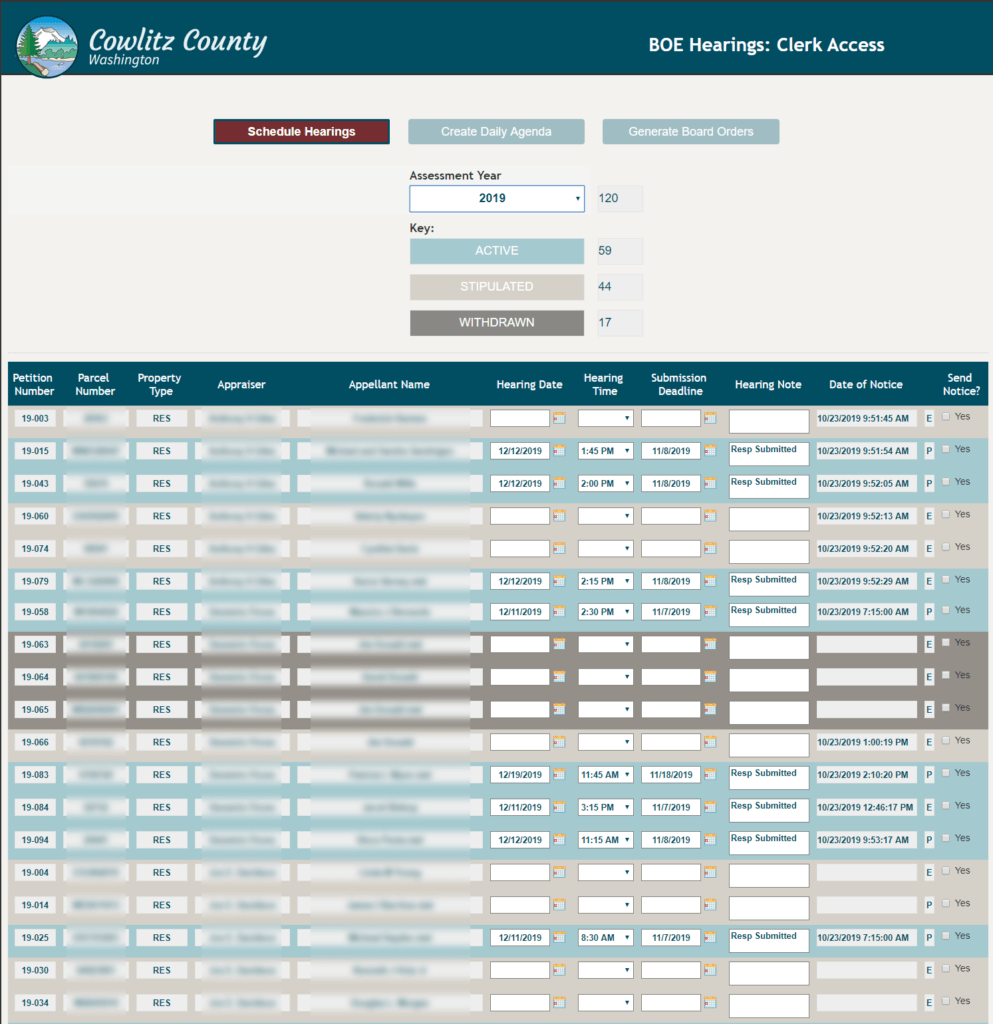
After the hearing is over, the clerk of the board uses Forms to populate a board order. He or she selects all attendees, types out the board findings and determination, and submits.
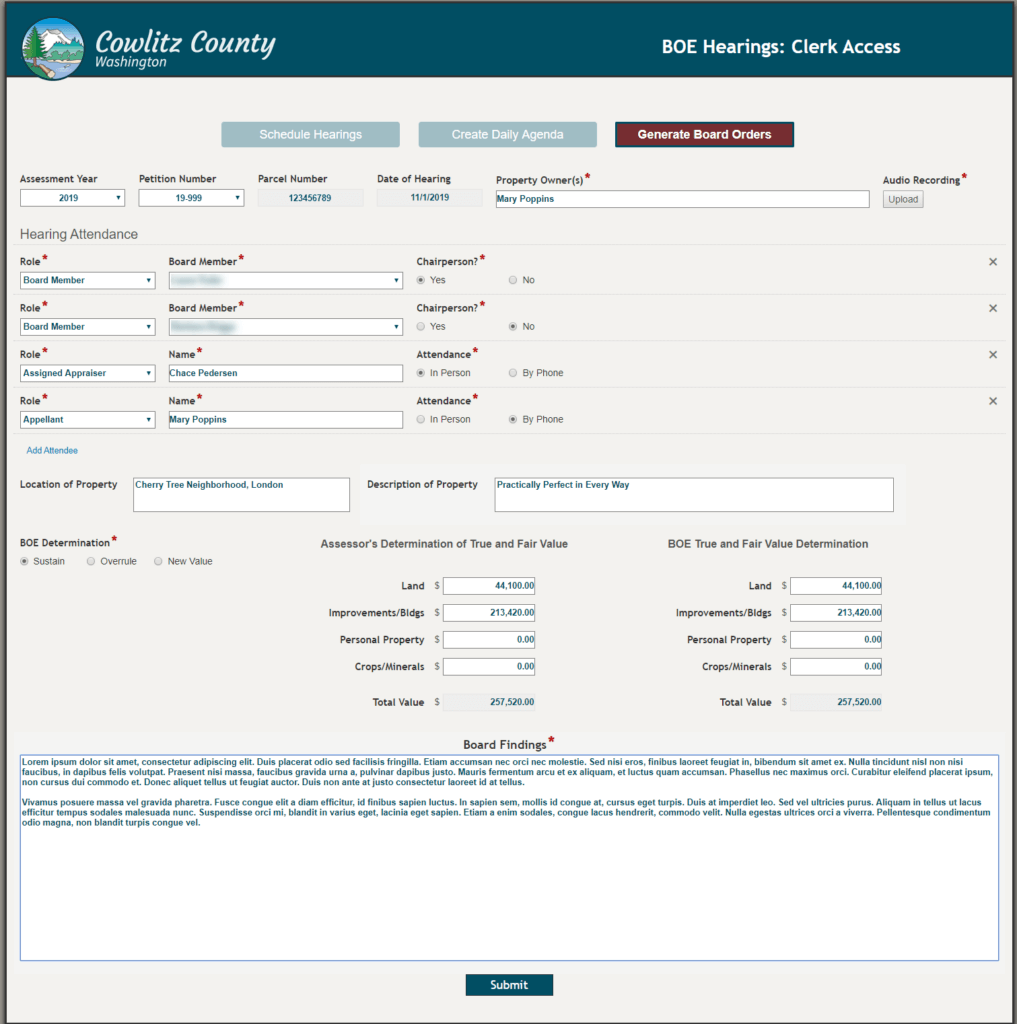
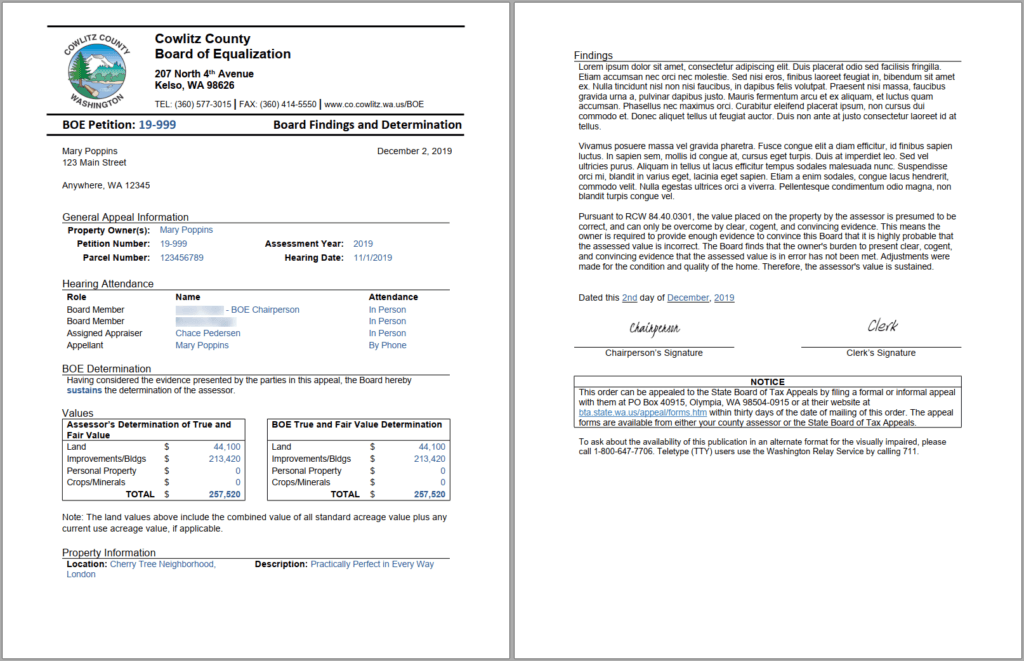
Workflow automatically generates a board order document in Microsoft Word, which the appellant can access through the online portal.
The board can make one of three decisions:
- Sustain the assessor’s property value.
- Overrule the assessor’s property value.
- Approve a new property value provided by the assessor.
All documentation related to every petition is stored in the appropriate folder in the repository.
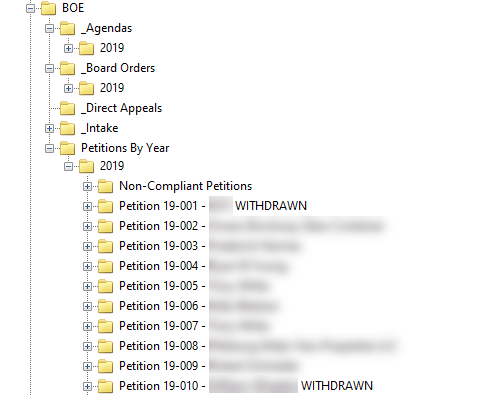
Benefits of Laserfiche
Automating the property tax assessment appeal process with Laserfiche has resulted in many benefits.
- It used to take the clerk 15-20 minutes per petition to scan it in, enter the metadata and create a physical file in the cabinet. If there was a problem with the petition, it would take anywhere from 10 minutes to a couple weeks to resolve it. Now, with the online form it takes two minutes to process the petition. If the appellant submits the petition on paper, it takes up to 10 minutes to enter the data into the electronic form and scan in the attachments. Since the form has many required fields, petitions are submitted with fewer errors that need correcting.
- The clerk used to take from an hour to 90 minutes to schedule one day’s worth of hearings using a separate spreadsheet. There are usually three or four hearing days, based on the number of petitions. It takes 15 minutes to schedule a full day’s worth of hearings now with the new dashboard.
- Processing a stipulation in person took about 25 minutes and by mail from five days to two weeks. Now, the process is automated and can take as little as 10 minutes from start to finish.





